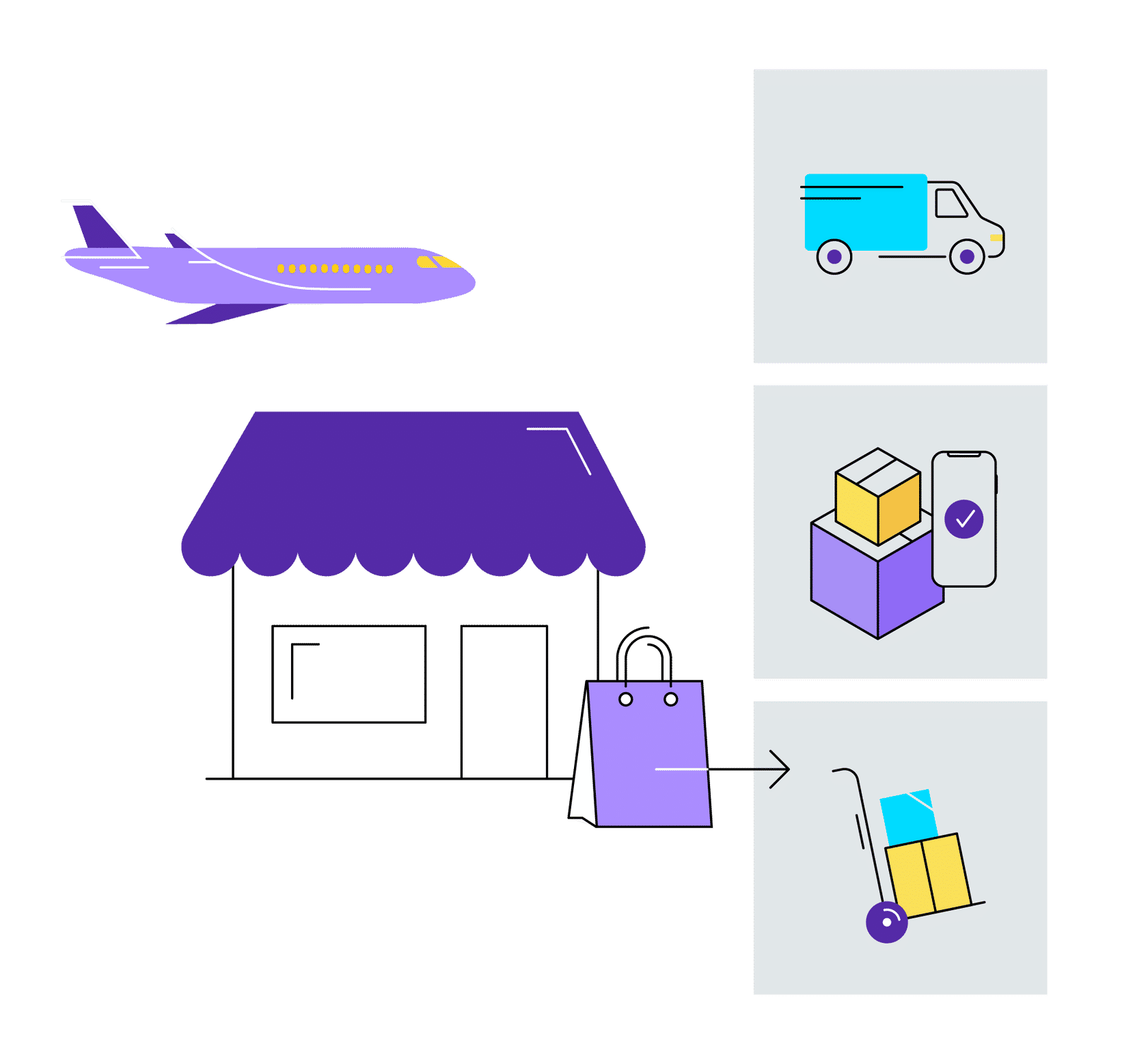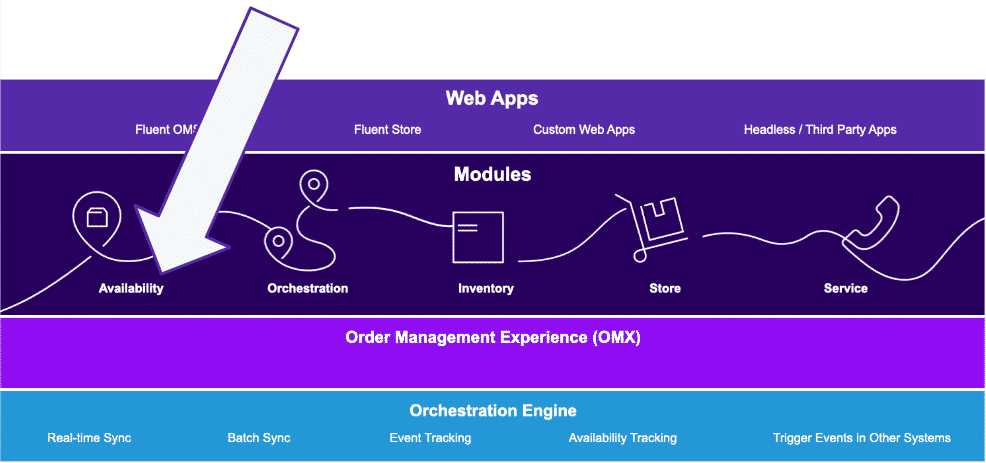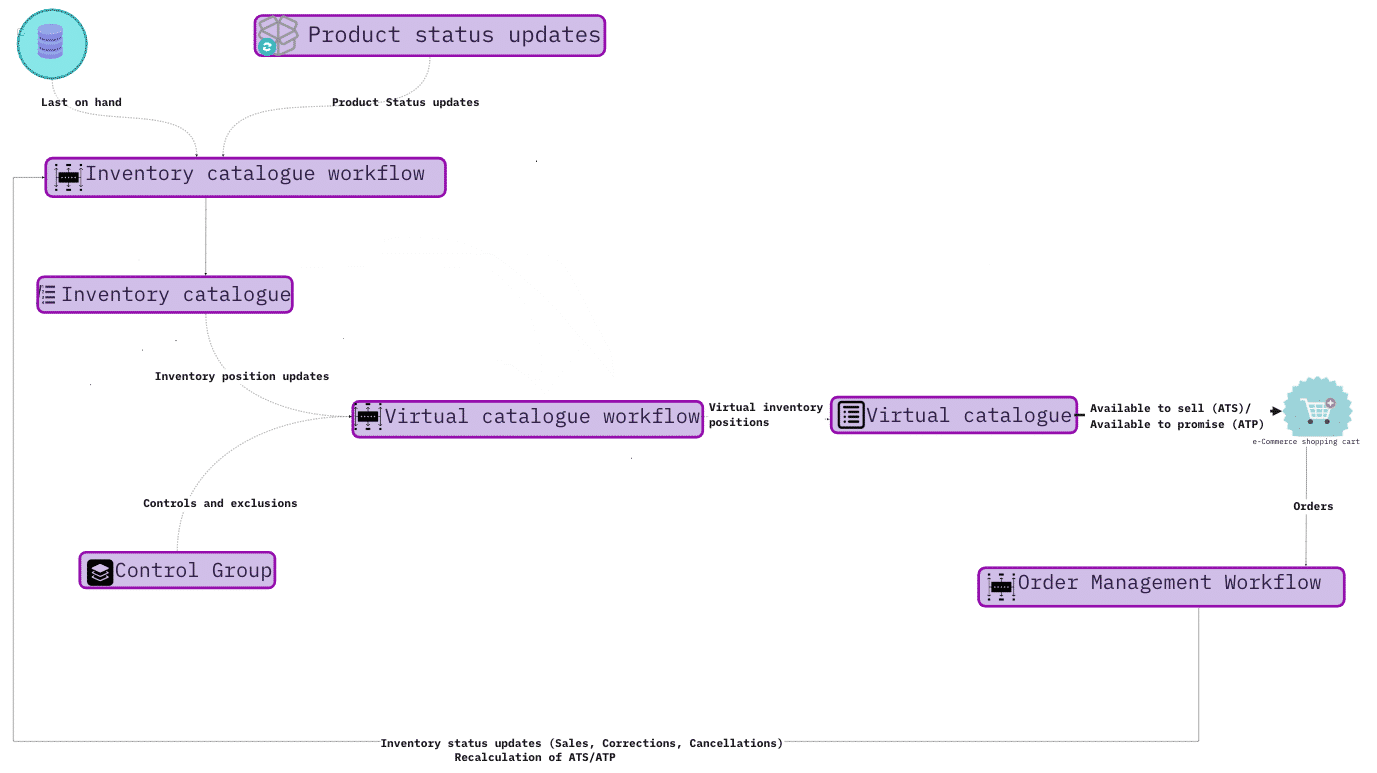Authors:
Esma Tuzovic, Cille Schliebitz, Anita Gu, Nandha Balaguru
Changed on:
31 Jan 2025
This course introduces the fundamentals of the availability module, helping you familiarize yourself with key terms and providing an overview of its high-level implementation in Fluent OMS.
In this course, we will explore the challenges retailers face in managing availability for e-commerce sites and other selling channels.
Your understanding of Availability might differ slightly from how we view Availability here at Fluent.
Availability typically answers the following questions for an online shopper:

Availability calculates inventory availability based on the following:
It can also calculate the time it will take for the customer to get the items and the delivery cost.

A diagram of the main layers of the Fluent platform is shown below. As you can see, Availability is one of the core Modules of the platform, providing capabilities relevant to product availability:

Web Apps provide user-friendly access to modules, including Availability. Users can configure out-of-the-box (or Reference) capabilities or extend each feature using SDKs to match their business needs.
The Fluent OMS Web App on the Fluent Commerce platform manages all aspects of the Availability module. You can explore its features and capabilities and watch a product demo here.

Network | A network is a set of one or more locations grouped together to optimize fulfillment. For example, a Retailer can have a network of locations fulfilling Home delivery orders only and another network of locations offering curbside pickup. |
Product Catalog | Consists of Category / Product / SKU / Price. |
Inventory Catalog | An inventory catalog consists of SKU / Location / Inventory Position. It receives inventory updates from one or more inventory systems (ERP, WMS, POS, etc.) and the Order Management Workflows. |
ATS / ATP |
|
Virtual Catalog (VC) | A Virtual Catalog (VC) provides a segmented view of quantities available for selling for different channels, such as an e-commerce website. A VC can be a subset of the entire pool of inventory thanks to control groups, networks, and buffer rules that apply. |
Control Groups | Controls Groups include buffers and exclusions. For more information, read Control Groups. Controls can be used to:
|
Copyright © 2025 Fluent Retail Pty Ltd (trading as Fluent Commerce). All rights reserved. No materials on this docs.fluentcommerce.com site may be used in any way and/or for any purpose without prior written authorisation from Fluent Commerce. Current customers and partners shall use these materials strictly in accordance with the terms and conditions of their written agreements with Fluent Commerce or its affiliates.